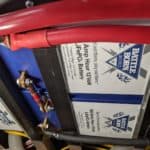
MENUMENU
TALK TO AN EXPERT
Special Hours: 7AM – 6PM PST
TALK TO AN EXPERT
Special Hours: 7AM – 6PM PST
Understanding the difference between wiring batteries in series vs. parallel is critical if you have multiple batteries you want to connect together in a larger bank. It’s something that is done all the time, even inside batteries, so it’s important to understand. How you connect your batteries will determine how they perform in different applications. Let’s look at how to wire batteries in series vs. parallel and when each method is appropriate.
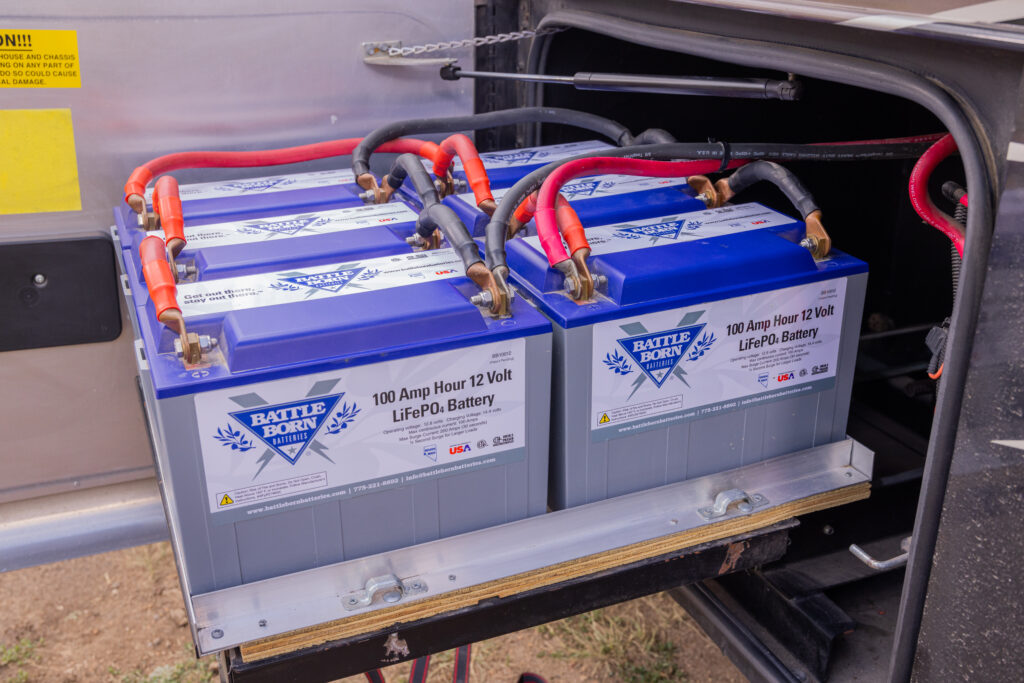
The main difference between wiring batteries in series and parallel is the impact on the output voltage and current capacity of the battery system. Batteries wired in series will add their voltages while the current capacity stays the same. Conversely, batteries wired in parallel will have their current capacities added together while their voltage remains the same. However, the total available energy (measured in watt-hours) in both configurations is the same if using the same number of batteries. How you wire batteries does not give you more energy capacity.
For example, wiring two 12-volt batteries with 100 Ah capacities in series will output a 24-volt system with a 100 Ah capacity. This means that the batteries will be able to put out 100 amps at 24volts for a total available energy of 2400 watt-hours (watt-hours = volts x amp-hours)
Wiring the same two batteries in parallel will output a 12-volt system with a 200 Ah capacity. Thus, both systems have a total available energy of 2400 watt-hours (watt-hours = volts x amp-hours).
Before we go further its important to note that batteries wired in series and parallel should always be the same type and size battery. Mixing types and sizes can cause damage to batteries.
When referring to batteries wired together to make a larger set of batteries we refer to the connected batteries as a “bank” of batteries.
⚡️ How about wiring solar panels in series vs. parallel? Find out here.
To wire multiple batteries in series, connect each battery’s positive terminal to the next’s negative terminal. Then, measure the system’s total output voltage between the negative terminal of the first battery and the positive terminal of the last battery in the series.
For example, two 12-volt 100 Ah batteries are wired in series. As you can see, the positive terminal on the first battery is connected to the negative terminal on the second. Thus, the system’s voltage will increase to 24 volts while the total capacity will remain at 100 Ah.
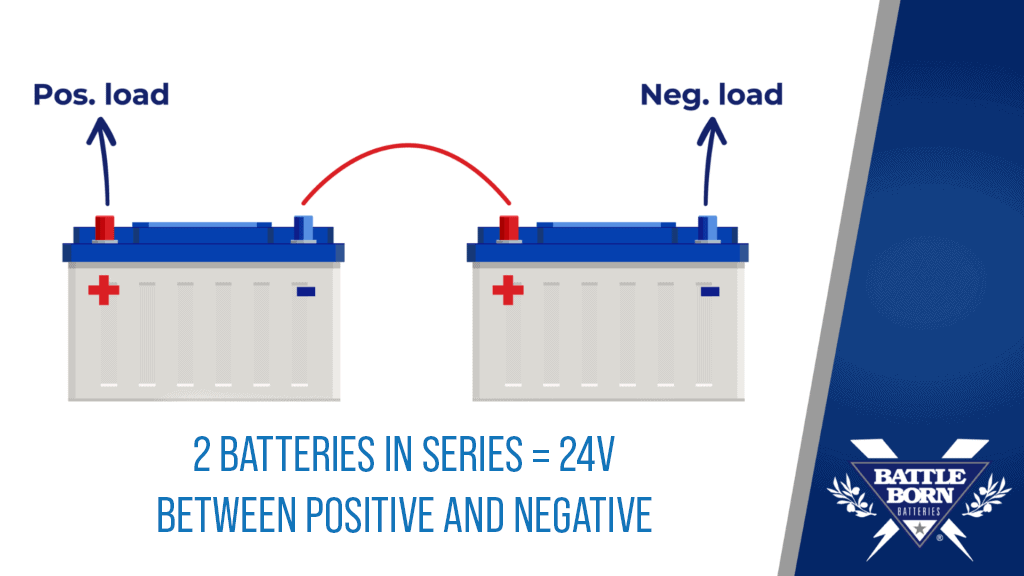
Similarly, with 3 – 12-volt 100Ah batteries wired in series, the voltages of all three batteries add together, resulting in a system voltage of 36 volts and a capacity of 100 Ah. You can basically think of it like making one higher-voltage battery.
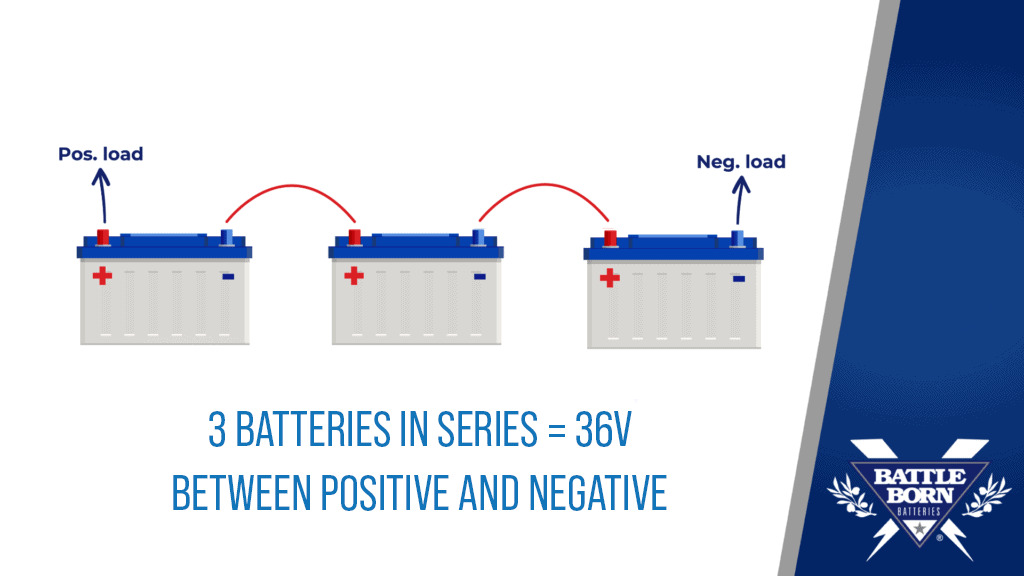
The power a device consumes equals its operating voltage multiplied by the current it draws. For example, a 360-watt device operating at 12 volts would draw 30 amps (12 x 30 = 360), while the same device operating at 24 volts would only draw 15 amps (24 x 15 = 360).
Wiring batteries in series provides a higher system voltage, resulting in a lower system current. Less current means you can use thinner wiring and suffer less voltage drop in the system.
Charging and power drawing work the same way. Consider an MPPT solar charge controller rated at 50amps. A 50A x 12V controller can only handle 600 watts of solar, but at 24Vx50A, it can handle 1200 watts!
In general, larger power systems can benefit from running batteries in series at higher voltages. In fact its the same reason our power grid operates at such high voltages, it carries more power at lower current with smaller wires.
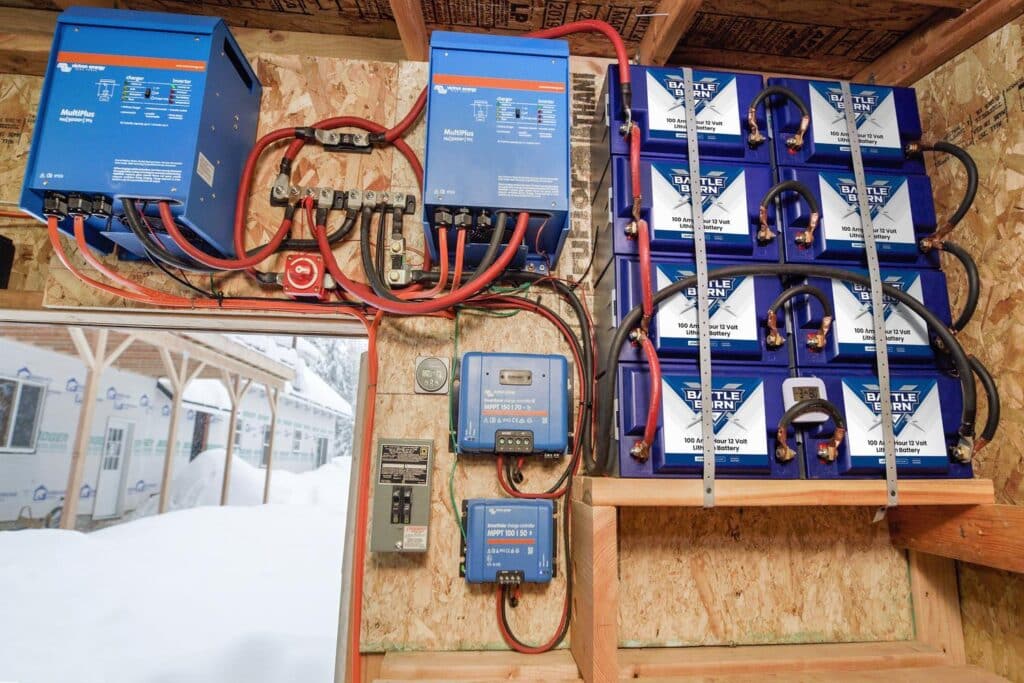
The limit on how many batteries you can wire in series typically depends on the battery and manufacturer. At Battle Born Batteries, the maximum is four batteries wired together in series, creating a 48-volt system. Always check with your battery manufacturer to ensure you do not exceed their recommended limit.
To wire multiple batteries in parallel, connect all of the positive terminals together and then all of the negative terminals together. Since all positive and negative terminals are connected, you can measure the system output voltage across any of the positive and negative battery terminals.
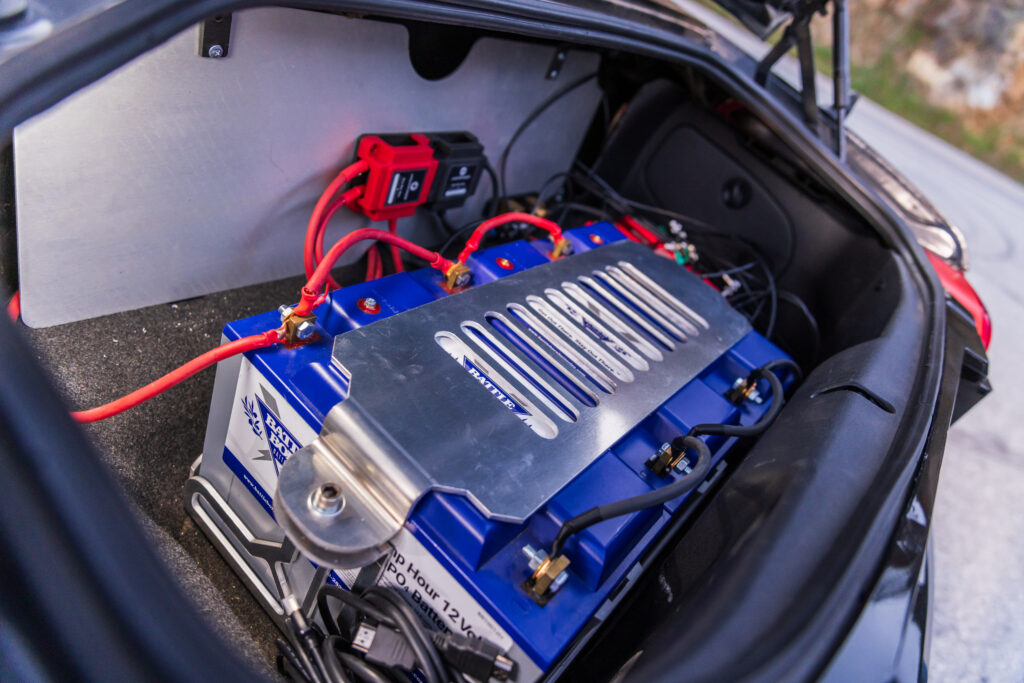
For example, two 12-volt 100 Ah batteries are wired in parallel. The positive terminal on the first battery connects to the positive terminal on the second. Likewise, the negative terminals of both batteries are also connected. The system has a voltage of 12 volts and a total capacity of 200 Ah.
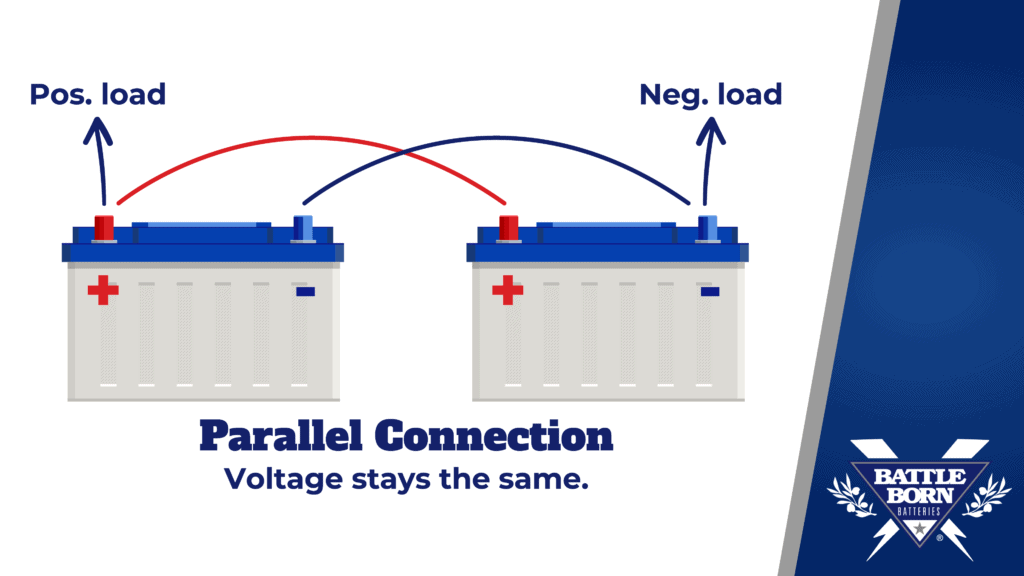
The same principles apply when adding a third battery. The capacities of all three batteries add up to a total capacity of 300 Ah at 12 volts. (This pack could output 300 amps per the rating of the 100 amp batteries)
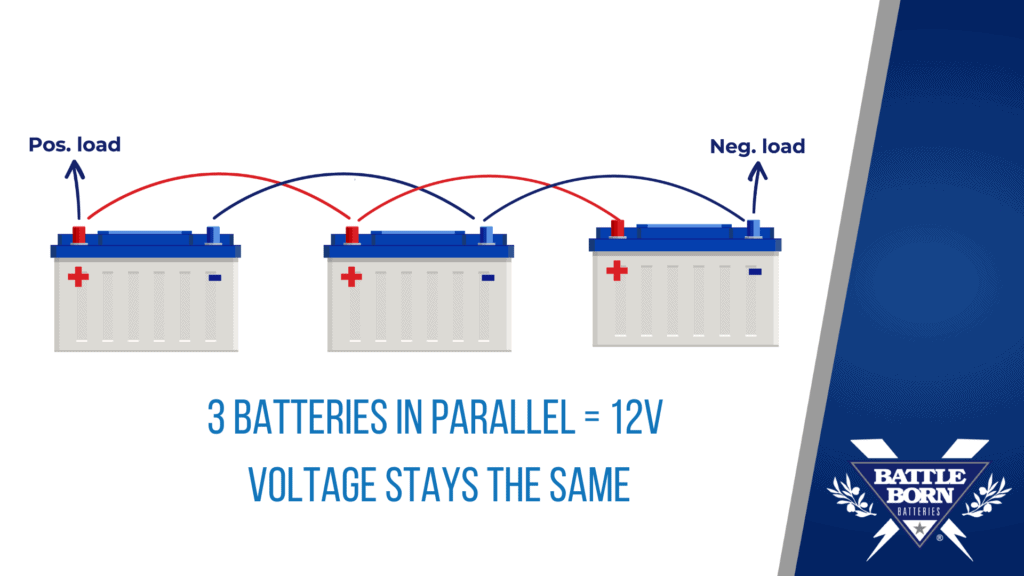
The main advantage of wiring batteries in parallel is that you increase your system’s available capacity while maintaining the voltage. Since the amp-hour capacities are additive, two batteries in parallel double your runtime, three batteries triple it, and so on.
Another advantage to wiring batteries in parallel is that if one of your batteries dies or has an issue, the remaining batteries in the system can still provide power, as they basically bypass it.
The main drawback to wiring batteries in parallel vs. series is that the system voltage will be lower, resulting in a higher current draw. Higher current means thicker cables and more voltage drop. Larger power appliances and generation are less efficient when operating at lower voltages.
There is no limit to how many batteries you can wire in parallel. The more batteries you add in a parallel circuit, the more capacity and longer runtime you will have available. Remember that the more batteries you have in parallel, the longer it will take to charge the system.
Huge parallel battery banks also have much higher current availability. This means the proper system fusing is critical to prevent accidental shorts that could have catastrophic consequences with so much current available.
You cannot simultaneously wire individual batteries in series and parallel without shorting the system. However, you can wire batteries in series and connect the sets in parallel to form a larger battery bank with a higher voltage.
The photo below shows a portion of a very large battery bank. Four 12-volt 270 Ah GC3 Battle Born Batteries are wired together in series to increase the voltage. This creates a 48-volt 270Ah system. Think of each set of four batteries wired together as one battery. To wire them in parallel, you must “create” another set of batteries equal to the voltage of the first. The system below includes 16 sets of 48V “batteries” wired together for 48 volts and 4,320Ah. This equates to 207,360 watt hours of storage, which is a lot! This runs a whole lodge.
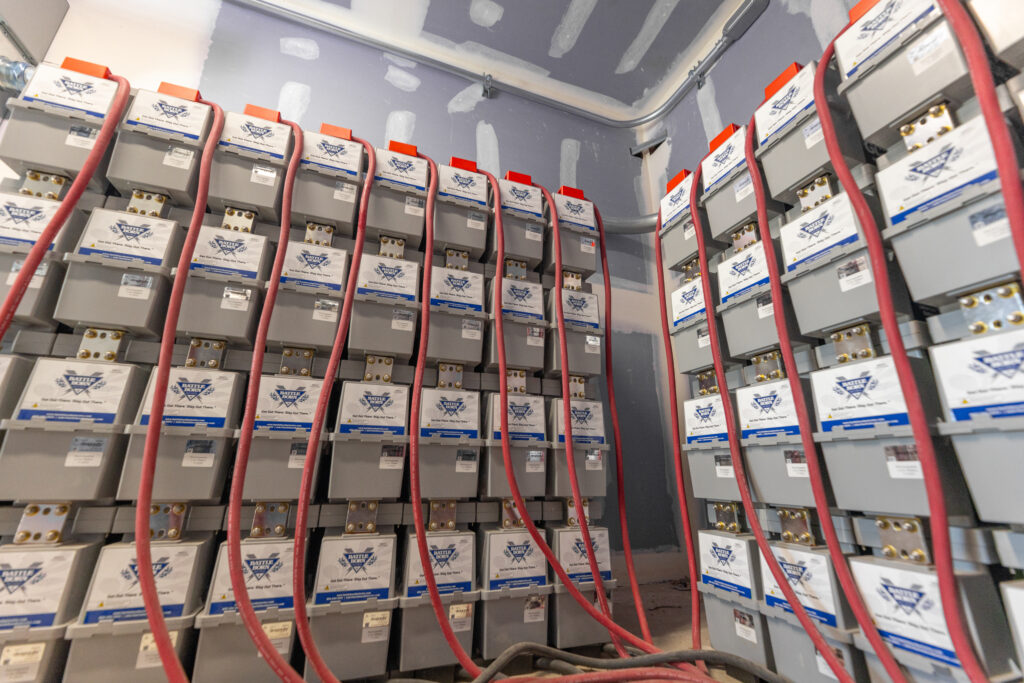
Besides ensuring you have the correct voltage charger, batteries in series vs. parallel charge the same way.
For batteries wired in series, connect the positive charger cable to the positive terminal on the first battery in the series and the negative charger cable to the negative terminal on the last battery in the series.
For even charging across a parallel bank, connect your charge similarly: positive connection to the first battery and negative connection to the last battery.
Optionally, a multi-bank battery charger may provide faster charge times for series and parallel battery banks. These work by charging each batter.y individually instead of the set (or bank) as a whole. Refer to the manufacturer’s recommendation for the best way to charge your batteries.
➡ Read our article on Charging Lithium Batteries: The Basics.
Choosing whether to connect your batteries in series or parallel depends on the specific needs of the devices you are powering. For general boat and RV applications, wiring batteries in parallel at 12V provides the most uncomplicated wiring and standard voltage. However, higher-voltage series connections might be best for large applications beyond 3000 watts. Now that you understand how each wiring configuration works, you can determine the best option for your needs and proceed confidently.
There is no better way to wire batteries; it all depends on your voltage needs. High power needs benefit from higher voltages, while lower voltages to match the needs of a vehicle simplify systems.
Generally, there is no benefit to wiring batteries in series or parallel, and you will get the same runtime out of them. However, there is one caveat when running high-power appliances.
Series connections provide a higher voltage, which is slightly more efficient when using high-power inverters. This means that batteries wired in series can last marginally longer than batteries wired in parallel. However, overall performance remains the same, and batteries connected in series and parallel will provide the same amount of energy. Let’s look at a quick example explaining why this is true.
Two 12-volt batteries with a 100 Ah capacity power a 240-watt device. These two batteries, wired in series, will provide 24 volts and 100 Ah capacity. The device’s current draw will be ten amps (24 x 10 = 240). Thus, the theoretical runtime is ten hours: 100 Ah divided by 10 amps.
Conversely, the same two parallel batteries provide 12 volts and 200 Ah of capacity. The device’s current draw in this setup is 20 amps (12 x 20 = 240). Thus, the theoretical runtime is also ten hours: 200 Ah divided by 20 amps.
However, 10 amps incurs less resistance than 20 and thus is slightly more efficient, reducing losses in wires and some electrical devices.
There is no difference in energy between parallel and series wiring when using the same number of batteries. You can also get the same power out of both series and parallel configurations. The series will just have higher voltage, and the parallel will have higher current.
However, higher voltages generally allow for higher power appliances and inverters, so series will allow for large appliance use.
As long as you do not wire more than four 12V batteries in series (48 volts), there is not much difference between series and parallel in safety. Beyond 50 volts, series voltages can get dangerous to work with and require special precautions.
No, series connections of any battery type do not increase amperage output. However, batteries can be wired in series (say 2 , 12V batteries) then another set of 2 in series can be connected in parallel to that set, doubling the amperage of the series set. See our series parallel paragraph in this article for more details.
We know that building or upgrading an electrical system can be overwhelming, so we’re here to help. Our Reno, Nevada-based sales and customer service team is standing by at (855) 292-2831 to take your questions!
Also, join us on Facebook, Instagram, and YouTube to learn more about how lithium battery systems can power your lifestyle, see how others have built their systems, and gain the confidence to get out there and stay out there.
Shop Best Sellers
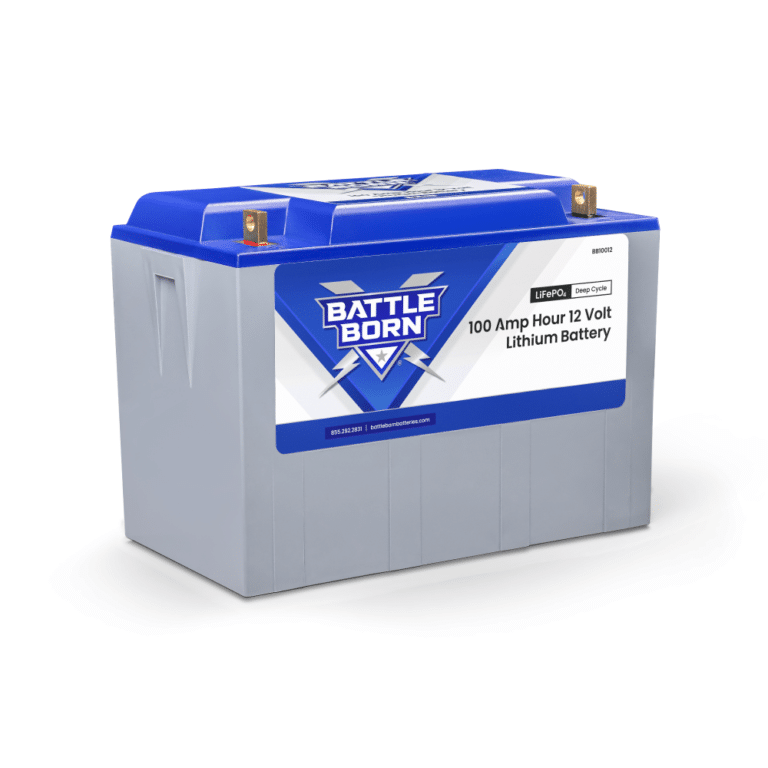
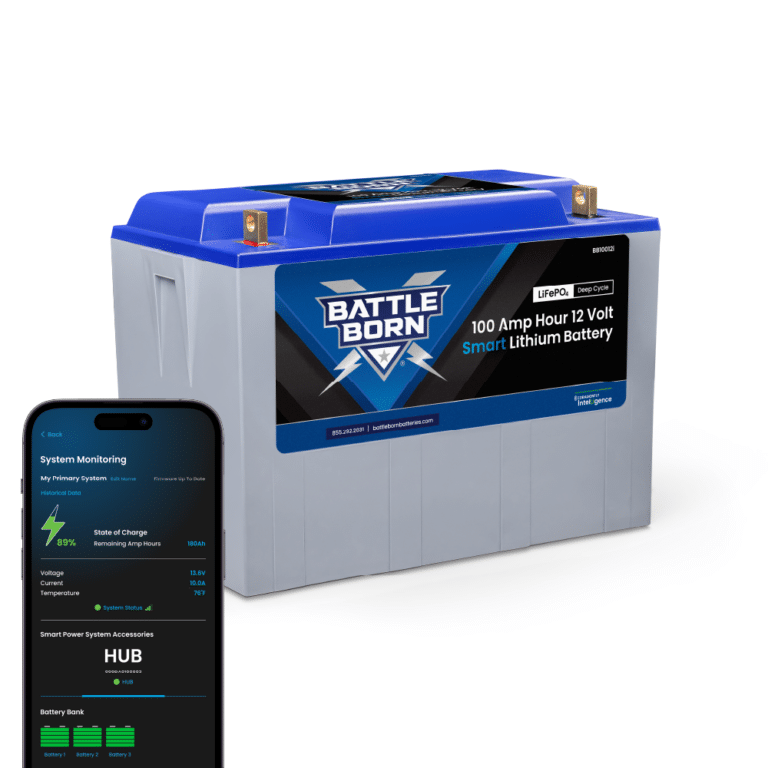
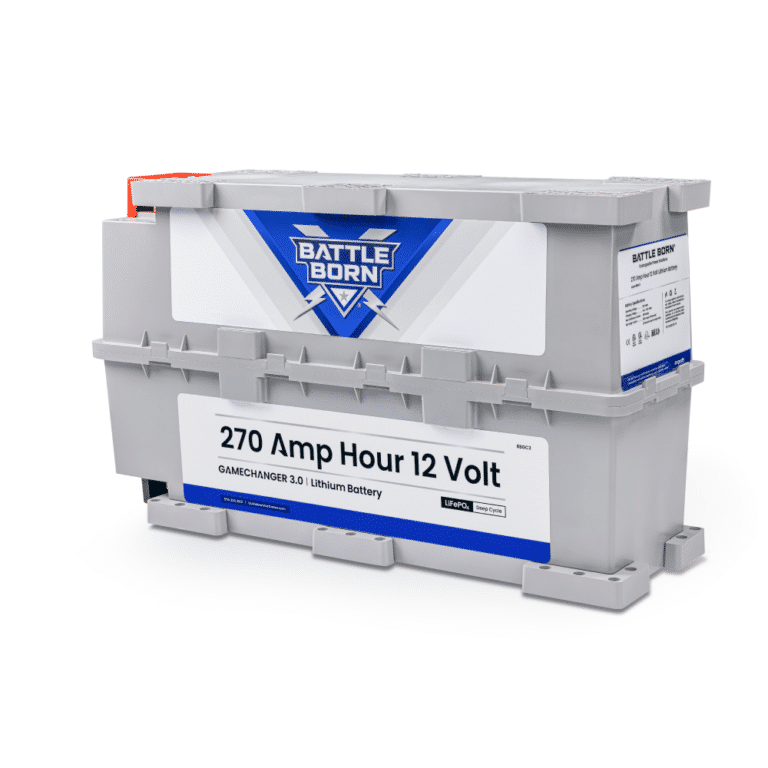
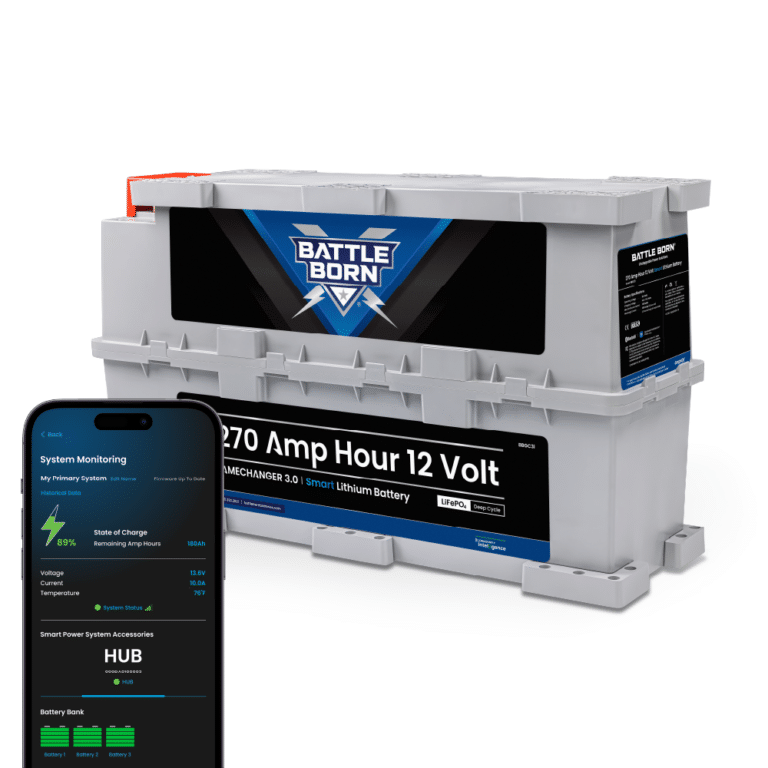
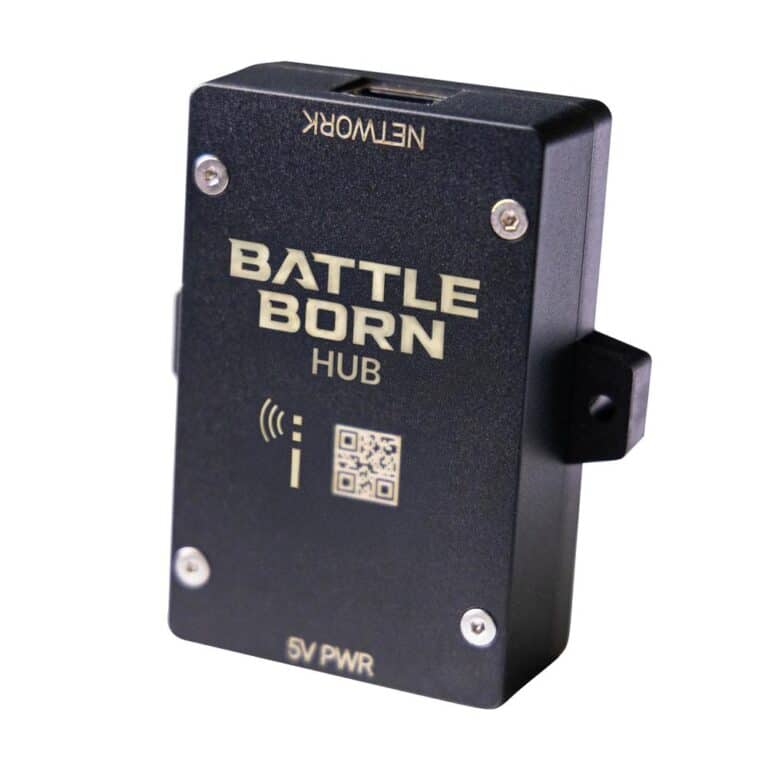
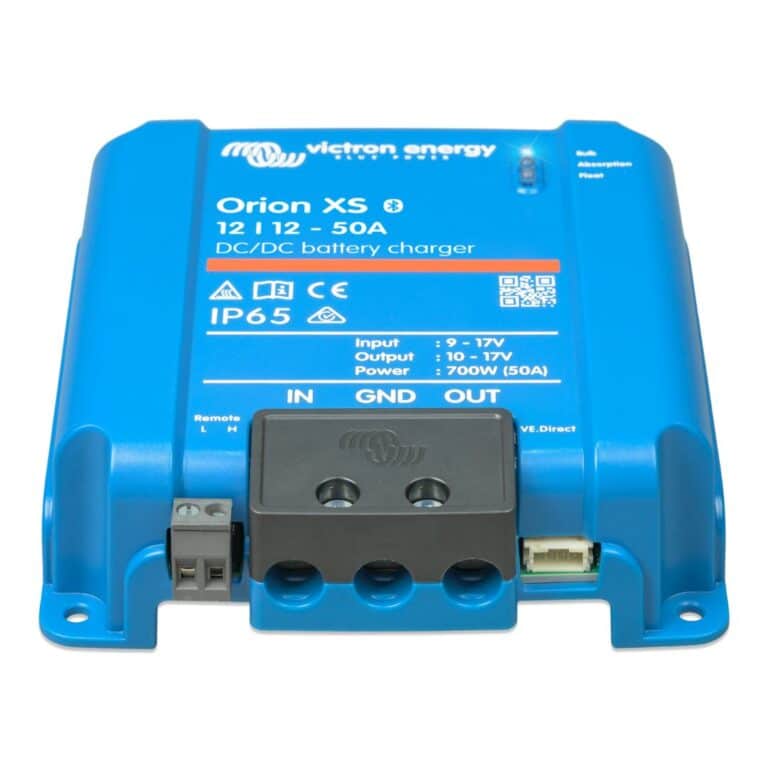
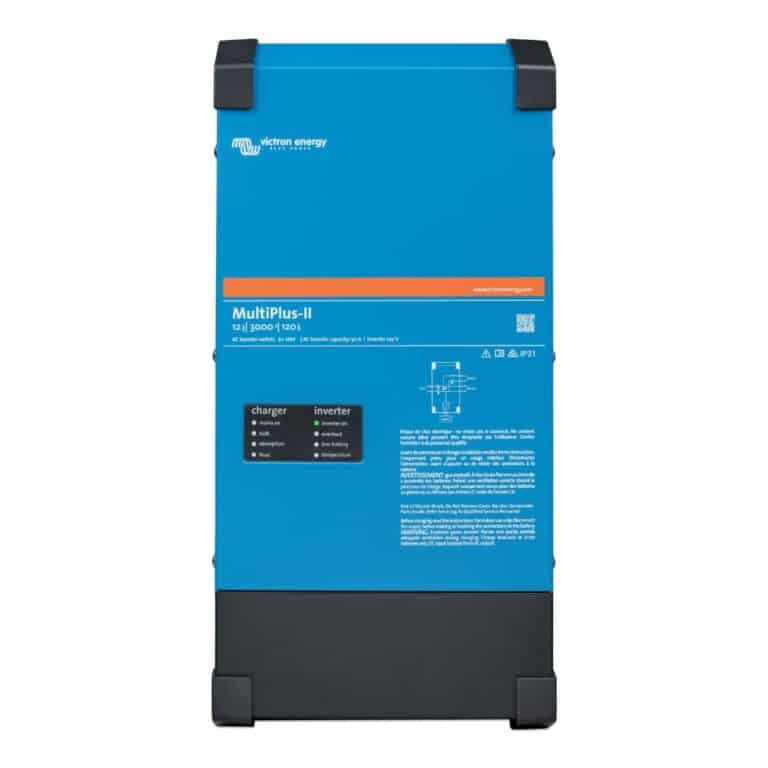

Ask a technical specialist now at 855.292.2831
Stay in the Know
29 thoughts on “What’s The Difference Between Wiring Batteries In Series Vs. Parallel?”
Very clear explanation.
if your boat is a 12volt system do you have to run the batteries in parallel
Hi Mark. In a battery system wired in series, you cannot get lower voltages off the battery bank without using a converter. Either all equipment needs to function at the higher voltage or an additional converter is needed to use 12V appliances on the system. Unless you have an additional converter, it would be best to wire your batteries in parallel.
if you wire 2 12volt batteries in series, one 100amp the other 200 amp what amperage will the result have?
same question if wired in parallel?
Hi Keith. We do not recommend mixing batteries of different amperages in the same system.
So we get the same run time from 12 volt vs 24 volt but what about the charging time? Won’t the 24 volt system with the two batteries at 100 AH charge quicker than the 12 volt system with 200 AH capacity? The system I will be using charges at 25 Amps.
Yes, a 100Ah system being charged at 25 amps will charge quicker than a 200Ah system being charged at 25 amps.
Excellent explanation – thanks!
Can I assume if I was using a trickle charger for a single battery, I can continue to use that for a parallel setup?
Hi Mike! Yes you can, but our batteries don’t require trickle charging.
Parallel and series connection, does the batteries life spend the same if my load is the same?
Hi Adam! There are not differing effects on the life of the our batteries depending on how you wire it. Whether you wire in parallel or series, the life span of the battery will remain the same.
Hi, a great explanation of batteries in series/parallel…thanks!
A couple of assumptions and questions, based on your Figure 15 diagram above:
– Assume batteries are, from left to right, 1, 2, 3 and 4
– All batteries are 100ah
– Batteries 1 and 2 together, and 3 and 4 together are serially connected
– Batteries 1 and 2 together, and 3 and 4 together constitute 2x 24v “batteries”
Question 1: If charging positive is connected to positive on battery 1, and charging negative is connected to negative on battery 4, that would create (essentially) 2x 24v 200ah banks connected in parallel. Is that correct?
Question 2: I currently have a 2400VA inverter installed, with 2x 12v 100ah batteries in series for a 24v bank, but want to extend the runtime by adding more batteries. If I am correct, the above should cater for that extension?
Look forward to hearing from you soon…
Hi Steven!
Question 1: Yes, that would create a 24V 200Ah bank.
Question 2: Yes, doing that would extend your runtime.
Hello!
In terms of wire length for series and parallel connection should it all be the same length or two diferent lengths as in the picture above?
Thank you!!!
Hi John! Due to the angle of the diagram it may appear that the wires are different lengths but they are not. Always be sure that all of your connection cables, whether in series or in parallel, or the same length.
Thank you!! I plan to do the 3rd setting with 4 batteries. What does the green cable stands for?
That is the heat enable cable, which would only be relevant if you were using our heated batteries.
How do you calculate the charge time of the battery for the series and parallel at 25amps charging current.
Take the total amp hours of the bank and divide by the hourly charging rate of your charger to get the total amount of time it will take to charge your bank.
If you have four 12v-100a batteries connected in series for 48v can you add a fifth battery in parallel to get 200a?
Hi Larry. You cannot do that. For a 48V 200Ah system you would need 8 batteries with 2 sets of 48V series wired together in parallel.
Hi, our setup is catamaran that has two large Yanmar V8 and on each I think 120A alternators, that are wired each through its own Blue Sea ACR to house battery bank, when we replace the AGM batteries with your LifePO4 it seems to me we would (1) have a lot more Ah capacity in the house bank that (2) would try and draw a lot more Amps when they see a source. Source could be shore power or generator through a Victron hybrid inverter charger and we will go solar that I think connects via MPPT regulator to the Victron. So key question : would we need a current limiting device installed between the ACR and your batteries??? My concern is overheating the Yanmar alternators when vessel is at idle and batteries are hungry. Thank you in advance
We recommend the Wakespeed WS500 Advanced Alternator Regulator. Check it out here: https://battlebornbatteries.com/product/ws500-advanced-alternator-regulator/
Hi, great write up. I have a question.
I want to build up a small system for home only. I want to power a fridge some LED lights and perhaps the TV for blackouts. I just want the longest runtime. Will have solar to charge during the day.
So, I was thinking 48v system and inverter. Or would 12v be enough (4x 200Ah batteries is what I am thinking)
Looking at Victron for the inverter/charger/MPPT
Cheers
Steve
Hi Steve! We recommend starting with the battery calculator on our website to get a better idea of exactly how many of our batteries and which size you would need based on your specific application. You can find the battery calculator here: https://battlebornbatteries.com/learn/calculator/ Then our technical sales team would love to help you configure the rest of your system. You can reach them at (855) 292-2831 (M-F 8:00am-4:30pm (PST)) or [email protected].
Thanks for taking time to make this explanation.
We have 6/12volt 100ah lithium battle born batteries
If we connect them in series and parallel how many ah do we end up with
We have a 2000watt 24 volt inverter
For a 24V system with 6 – 12V 100Ah Battle Born Batteries in series-parallel connection, you would have 24V and 300Ah for your total system.
Great breakdown of wiring configurations! I appreciate the clear explanations of the pros and cons of series versus parallel setups. It’s helped me decide how to configure my battery bank for optimal performance. Thanks for the insights!